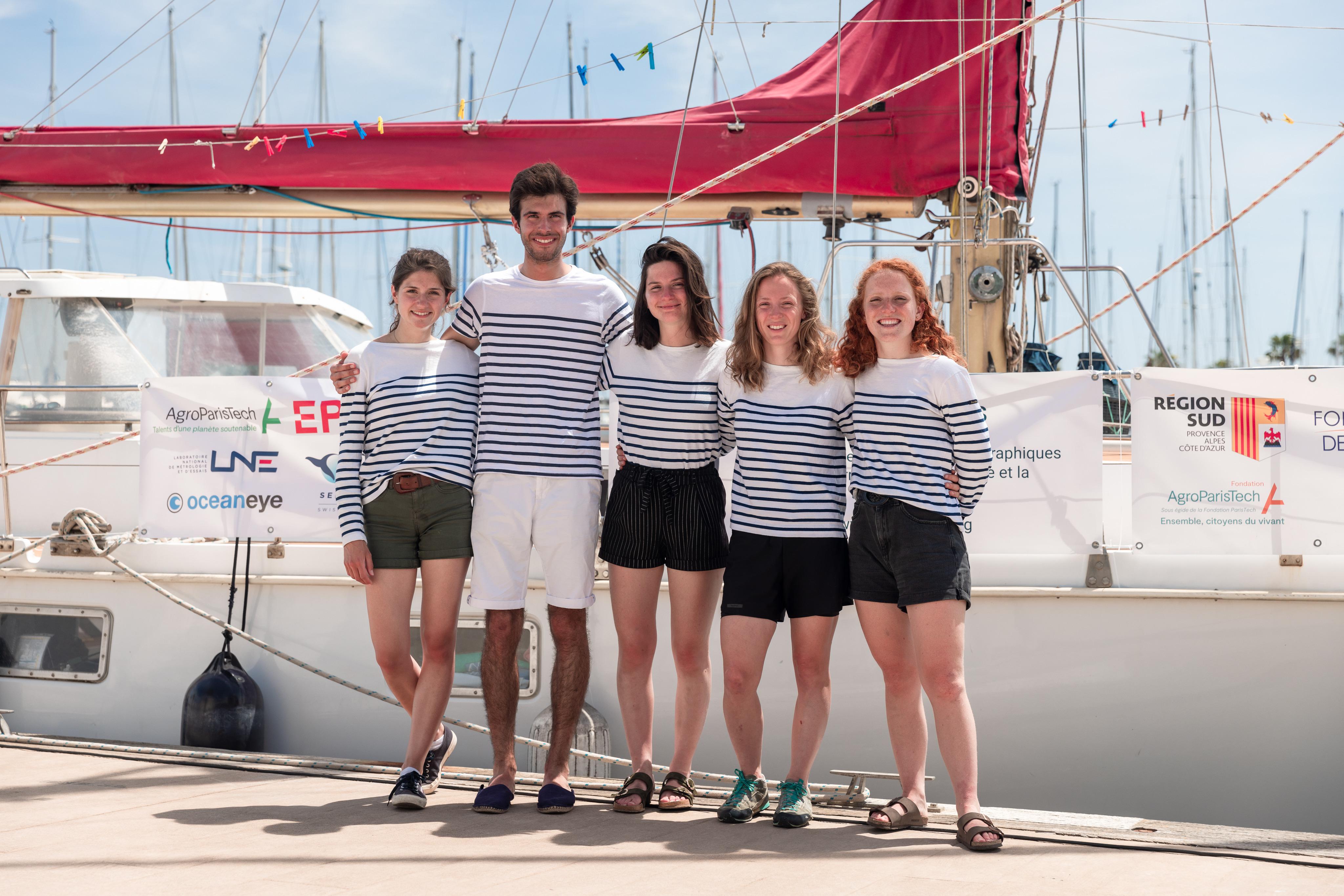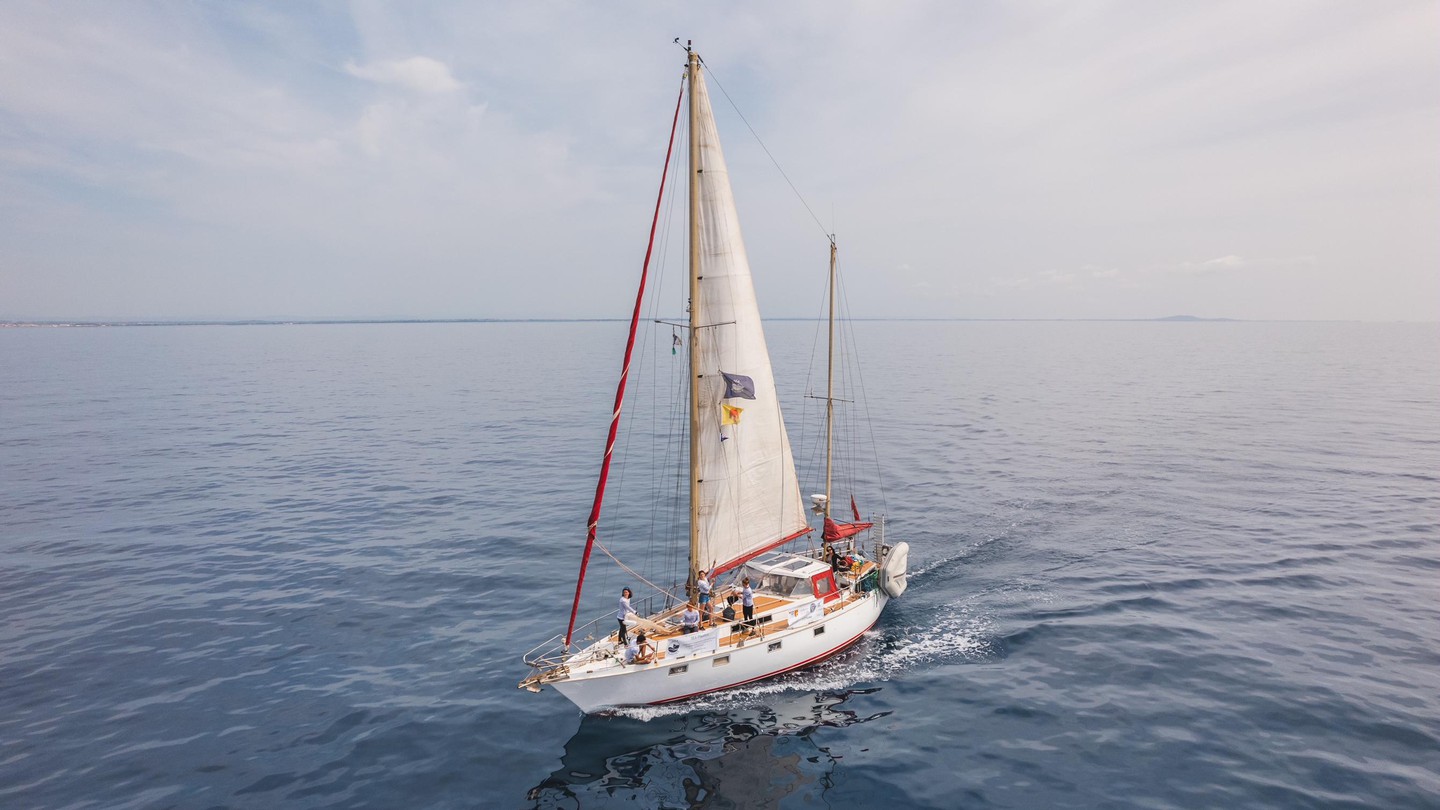Plastics are everywhere in our environment, even inside living organisms. This article looks at the impact of this major pollution risk and accompanies our report on the SEA Plastics expedition, which is currently crisscrossing the Mediterranean to raise awareness of the issue.
Nowhere on Earth is free from microplastics. These tiny particles have been discovered at the top of Mount Everest, at the bottom of the Mariana Trench, on the most remote beaches in the South Pacific, in the leaves of trees and even inside our organs. The scientific community is gradually coming to understand this pervasive, multifaceted problem. And while uncertainties remain as to the true scale of microplastic pollution, we are learning more and more about its impact on ecosystems, biodiversity, the climate and human health.
This article – on the importance of this major pollution risk – accompanies a report on a week spent with SEA Plastics, a non-profit organization that conducts an annual research expedition in the Mediterranean. On that expedition, a group of young scientists takes measurements and collects samples to further our understanding of microplastic pollution. They also carry out awareness-raising activities at their ports of call. Laurine Planat, a student at EPFL’s School of Life Sciences (SV), is one of the members of this year’s team. Her research is being supported by the Central Environmental Laboratory (CEL) at EPFL’s School of Architecture, Civil and Environmental Engineering (ENAC).
Laurine is the team’s scientific lead and is in charge of carrying out on-board experiments. The aims of this year’s expedition are to develop new microplastic characterization methods, to study micropollutant transport patterns, and to gather data on how different environmental factors affect the plastic aging process.
Much remains unknown or poorly understood about this kind of pollution. This is especially true for microplastics: small pieces of plastic less than five millimeters across. As well as being harmful, these particles are also invisible to the naked eye, with estimates suggesting that visible waste accounts for just 1% of the plastic held by the seas and oceans.
And then there are nanoplastics, even tinier fragments measuring between one micrometer and 100 nanometers in diameter. At such a minute scale, this type of pollution is even harder to measure and quantify. But scientists have already found these particles in almost every ecosystem on Earth – and even inside living organisms. In a study published in April this year, the Swiss Federal Institute for Forest, Snow and Landscape Research (WSL) reported evidence of nanoplastics accumulating in the roots of forest trees, from where they are transported to branches and leaves.
Plastic pollution has an impact on ecosystems, human health and the climate. An estimated 5–10% of all the oil we extract is used to make plastic products. And only around 10% of this plastic is actually recycled. “Much of the rest is incinerated, often in poorly controlled conditions, which releases large quantities of greenhouse gases into the atmosphere and drives global warming,” says Breider, the head of CEL. He adds that plastics discarded in the environment tend to release methane, a powerful greenhouse gas, as they degrade over time.
For the full version of this article, along with our report on the SEA Plastics Expedition, go to: https://go.epfl.ch/microplastics

Source: EPFL News, CC Int’l 4.0


Comments